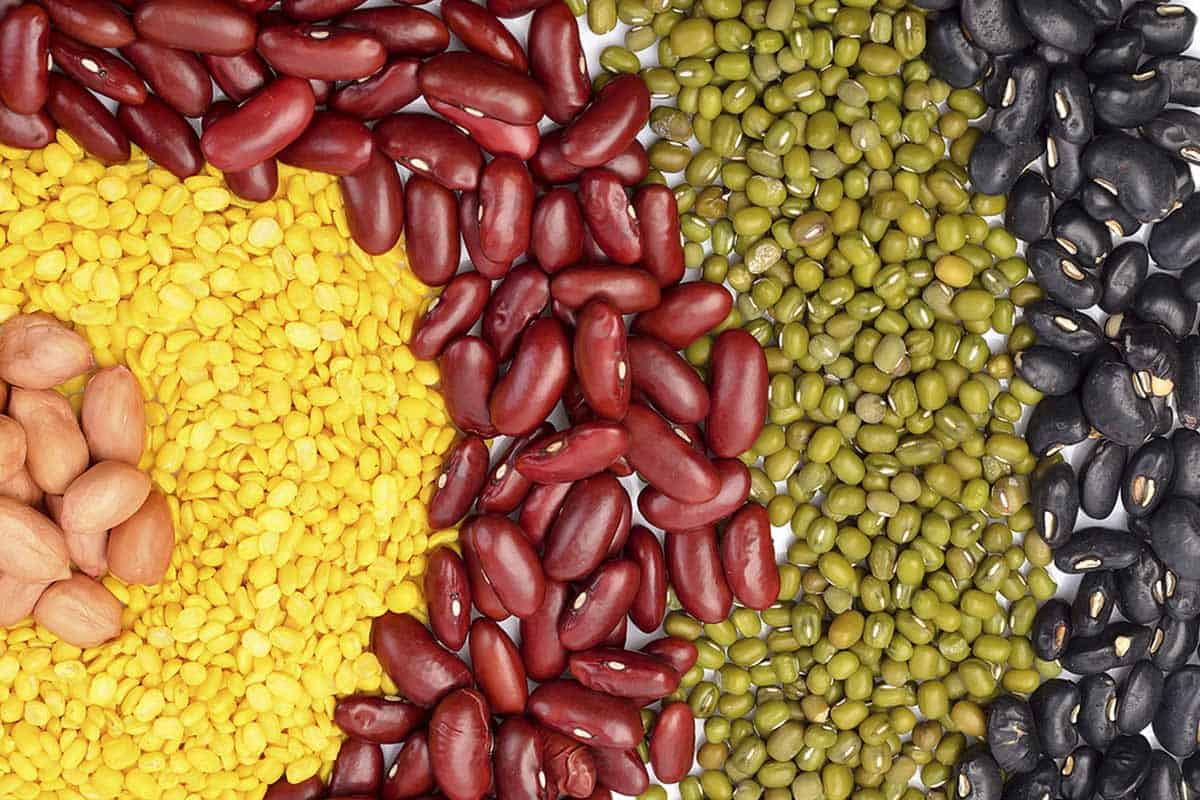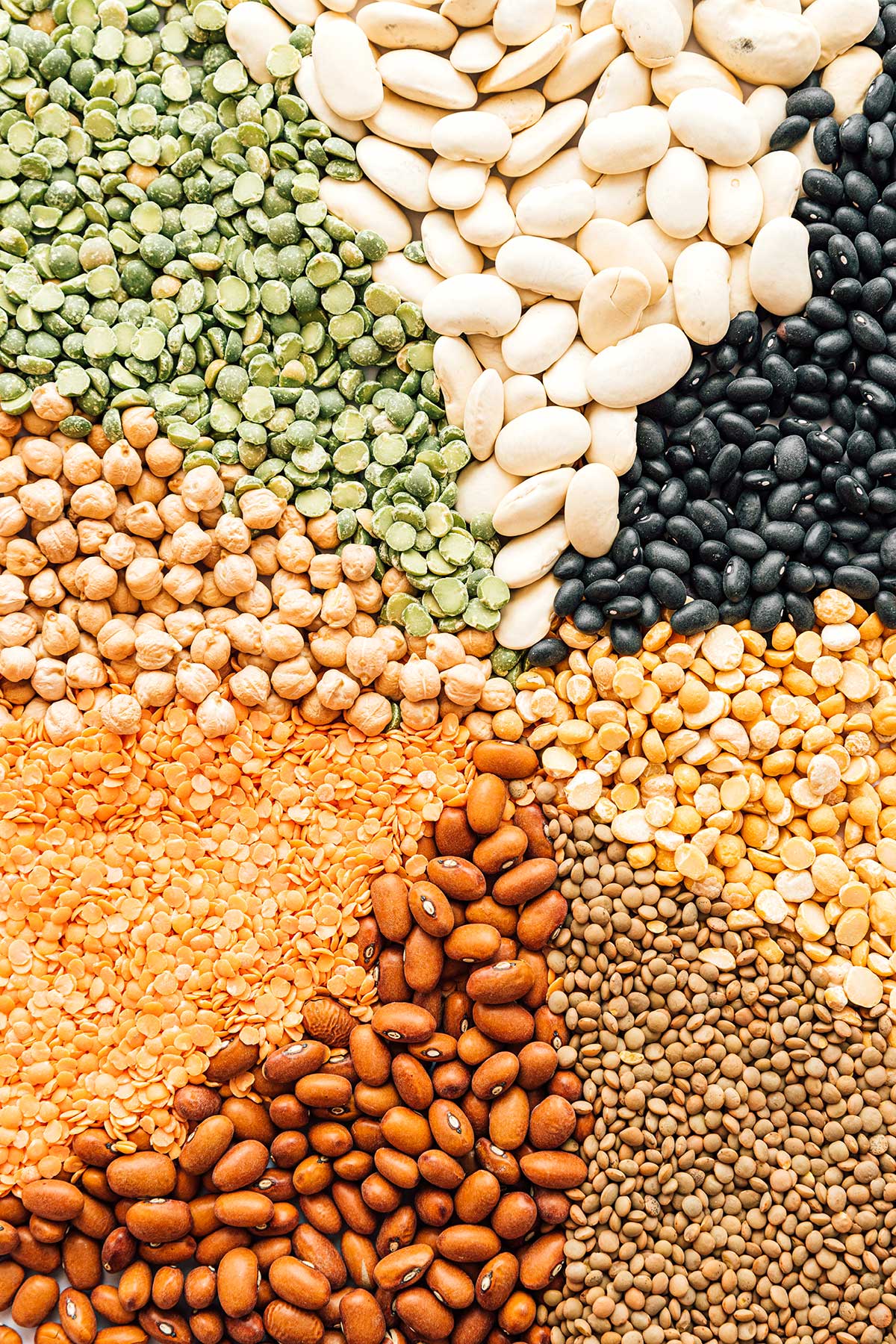Are you ever not sure what kind of beans make the best chili? This guide will show you the 10 best beans for chili, so you can enjoy your choice!
Check out the answer at the end of this post. Can you guess how many kinds of beans there are?
Chili is one of America’s most beloved dishes with many varieties and recipes existing across the country. But while people may argue over ingredients like meat, peppers or toppings one essential component of chili is beans. So what exactly are chili beans? And what are the best types of beans to use in your chili recipes? This guide will walk you through everything you need to know.
What Are Chili Beans?
Chili beans refer to the type of beans used as the base in a traditional chili recipe Chili originated in Texas in the late 1800s, and the earliest versions used basic pinto beans But over time, recipes evolved to include other bean varieties as well.
The most common chili beans used today are:
- Kidney beans (also called red beans)
- Pinto beans
- Black beans
- White beans like great northern, navy or cannellini
While these are standard, you can get creative with your chili beans. Almost any bean can work, but those with a creamy texture that hold their shape well when cooked are best.
Why Are Kidney Beans the Most Popular Chili Bean?
Of all the chili bean options, kidney beans (also known as red beans) are hands-down the most popular. There are a few reasons for their widespread use:
Traditional association – Kidney beans have been used in chili recipes for over a century, so they’re considered the standard. Many people prefer to stick with tradition when making chili.
Hearty texture – Kidney beans have a smooth, creamy texture that holds up well when simmered in chili. They don’t break down or get overly soft.
Flavor – Their mild flavor absorbs and complements the spices in chili nicely without overpowering.
Color – The deep red kidney bean provides an iconic look that many associate with classic chili.
Availability – Kidney beans are widely available canned or dried year-round making them a convenient chili bean option.
So feel confident going the traditional route and using kidney beans which provide that quintessential chili bean experience.
How Do Other Common Chili Beans Compare?
While kidney beans may be the gold standard, other beans can also make great chili. Here’s how some of the other popular chili bean varieties stack up:
Pinto beans – With their brownish-red speckled skin and creamy texture, pintos are a Southwestern favorite. They hold their shape decently when cooked. Go easy on cooking times as they tend to get mushier faster than kidney beans.
Black beans – A staple in Latin cuisine, black beans have an earthier flavor and creamier consistency. They withstand lengthy cooking while keeping their shape. Great paired with spicy chilis.
White beans – Cannellini and great northern beans have a smoother, almost buttery texture. They work well for a lighter, less tomato-y chili. Don’t over cook them into a mush.
Navy beans – Smaller and firmer than other white beans, these hold up to prolonged cooking without getting too soft. A great choice for oven-baked chili.
Other Unique Chili Bean Options
While traditional beans are great for chili, you can get creative with more unique varieties as well. Some top options include:
-
Anasazi beans – Native to the American Southwest, these large white beans have a sweet, nutty flavor.
-
Cranberry beans – Named for their speckled cranberry-like pattern. These have a tender texture and sweet taste.
-
Adzuki beans – Small dark red beans popular in Asian cuisine. They have a sweet flavor.
-
Garbanzo beans – Also called chickpeas, these firm beans work well in vegetarian chili.
-
Lima beans – A classic green bean with a starchy, buttery consistency. Provides great texture.
-
Edamame – For a twist, try fresh or frozen edamame. The immature soybeans provide protein.
Don’t be afraid to experiment with different bean types to put a unique spin on your chili. Just adjust cooking times as needed.
Should You Use Canned or Dry Beans for Chili?
You can use either canned or dry beans when making chili. Each has its advantages:
Canned beans
- Convenient, ready to use right from the can
- Saves prep and cooking time
- Available year-round
Dry beans
- Less expensive than canned
- Lower sodium – better if limiting salt intake
- Can control texture better with cooking times
- More variety of beans available dried
For quicker chili, canned beans are great since they’re pre-cooked. But cooking dried beans from scratch allows you to better calibrate the perfect tender-firm texture. Just remember to soak dried beans before cooking. Either way, delicious chili can be achieved.
How Should You Prepare Beans for Chili?
If using canned beans, you can simply drain and rinse them before adding to your chili. For added flavor, try sautéing them with onions and chili spices first.
For dry beans, it’s ideal to soak them first before cooking to reduce gas-producing oligosaccharides. There are a few soaking methods:
-
Overnight soak – Cover beans with water and soak 8-12 hours or up to 24 hours
-
Quick soak – Boil beans for 2-3 minutes then soak 1 hour
-
Instant pot soak – Use the pressure cooker soak function if available
After soaking, drain the beans and cover with fresh water. Bring to a boil, then reduce heat and simmer until tender – usually 1-2 hours but time varies by bean type. Add to your chili in the last 30 minutes of cooking.
How Much Beans Should You Use in Chili?
The amount of beans to add depends on your personal taste, but here are some general guidelines:
-
For a bean-based veggie chili: 3-4 cups cooked beans per 6 servings
-
For a meat chili: 1-2 cups cooked beans per 6 servings
-
For competition style chili (more sauce than beans): 1 cup or less per 6 servings
-
For a bean soup/stew: 4-6 cups cooked beans for a heavier, bean-forward dish
Start on the lower end of a range. You can always add more beans to thicken or bulk up the chili. But resist overloading the chili with beans or it can become more like bean soup.
Should You Salt Beans Before or After Cooking?
It’s actually best not to add salt to the soaking or cooking liquid for beans. Salt can toughen the bean skins making them hard to cook through.
Instead, season chili beans after they have finished cooking and you’ve added them to the chili. This ensures they’ll be properly seasoned within the dish.
Do Beans Cause Gas in Chili?
It’s true – the fiber and sugars in beans can lead to gas for some people. To reduce this, soak dry beans before cooking and rinse canned beans. Start with small servings of bean-based dishes and increase slowly to allow your body to adjust. Adding beans to chili may take some digestive adjustment.
What Other Tips Give the Best Chili Beans?
-
Sauté onions, garlic, and spices in oil first to bloom flavors before adding liquid and beans.
-
Add acid like tomatoes or a splash of vinegar or lime juice. It helps tenderize beans.
-
Check beans for doneness after simmering or pressure cooking. They should be creamy and tender but still hold their shape, not mushy.
-
Let chili simmer 15-30 minutes after adding beans to let flavors meld.
-
Garnish bowls of chili with extra beans for texture and protein.
-
Beans not used in the chili batch can be frozen for later use.
Common Chili Bean FAQs
What beans go in chili?
The most common choices are kidney, pinto, black or white beans like cannellini, great northern or navy. But you can get creative with beans like chickpeas, cranberry, anasazi or others.
Can you use black beans instead of kidney beans in chili?
Absolutely. With a similar creamy texture when cooked, black beans make a perfect substitute for kidney beans in chili recipes.
What are the best beans for chili cook offs?
For competition and judging, go with classic kidney beans or black beans. Judges will expect and recognize their appearance and flavor.
Which bean leads to the least gas in chili?
Unfortunately most beans will cause some flatulence but pinto, black and cannellini are reported to be the most digestible options. Increase intake slowly.
Can you make chili without beans?
Beanless chili is quite common, though traditionalists would argue beans are essential. Substitute extra meat, veggies like peppers or mushrooms, or grains like rice or farro instead.

To Soak Or Not To Soak?
Surprisingly, soaking dried beans prior to cooking does not make them cook better or faster. In fact, it actually only marginally reduces cooking time while also making them less flavorful. I recommend skipping the overnight soak and boiling directly from the package (after rinsing, of course)!.
However, if you struggle with digestibility, you may want to keep the soaking step. This step may be necessary for some because it is thought to help the beans be easier to digest.

Chili can be keto. Find a good chili recipe for “Meat Lovers” that doesn’t have beans, corn, peas, or other starchy vegetables. The USDA says that ½ cup of canned kidney beans has 14g of net carbs, which are total carbs minus fiber.
So, while beans don’t help with a keto or other low-carb diet, that 20%C2%BD cup gives you 8% of your daily iron needs, along with folate, magnesium, calcium, and many other vitamins and minerals.
If you want your chili to stay dark, black beans are the best choice. However, there are at least 29 other types of beans you could use.
A lot of people like their chili with no beans at all. Even though this is a vegetarian cooking blog, there’s nothing wrong with chili that tastes great with meat.
There are, however, a lot of great options for bean substitutes. Try soy beans, tofu, edamame, lima beans, peas, or mushrooms. You can also go with a grain like farro, quinoa, brown rice, white rice, or riced cauliflower.
According to the National Institute of Health and the Cleveland Clinic, YES they do. The mechanism (culprit) for this is the fiber in beans. As the bacteria in your digestive tract works to digest fiber, they create gas as a by-product. Don’t let this keep you from eating beans!.
The US Department of Agriculture says that more than 90% of Americans do not eat enough fiber. The RDA is 25g for women and 38g for men. Beans are high fiber foods that can help you reach the RDA. But to avoid bloating and gas in the intestines, you should slowly increase the amount of beans you eat instead of starting all at once.
Should I use canned or dried beans For Chili?
While you may prefer one or the other, each has their appropriate uses. So let’s dive into the pros and cons to each!.
Using canned beans is easy and a big time saver. Just pop the cans open and dump them into your chili. We recommend putting them in late in the cooking process so they don’t get too mushy. You can either add them directly from the can or rinse them first. Many chili cooks prefer them unrinsed as the starchy water in the can helps thicken the chili.
The price of canned beans is usually higher than the price of bags of dried beans, and there is a big difference in how healthy they are. Canned beans contain a lot of sodium. It is suggested by the USDA that you should not exceed 2,300 mg of sodium per day. However, the CDC says that 90% of Americans do exceed this amount, often by quite a bit. In this group are people who eat a lot of processed foods or like to salt their food.
Looking at the numbers, canned beans have dramatically more sodium than their dry counterparts:
| Type of Bean | Sodium mg (canned) | Sodium mg (dry) |
|---|---|---|
| Kidney Beans | 614 | 11 |
| Black Beans | 1633 | 8 |
| Pinto Beans | 1185 | 13 |
| Garbanzo Beans | 622 | 24 |
- Kidney beans: One can of kidney beans has 330 calories and 614 mg of sodium. The same number of calories in dry beans only has 11 mg of sodium.
- Black Beans: A can of black beans with 387 calories has 1633 mg of sodium, but dry black beans with the same number of calories have only 8 mg of sodium.
- Pinto Beans: Each can of pinto beans has 362 calories and 1185 mg of sodium. The same number of calories in 13 grams of dry pinto beans
- Garbanzo Beans: One can of garbanzo beans has 352 calories and 622 mg of sodium. There are 24 mg of sodium in the same number of calories as dry garbanzo beans.
If you are watching how much sodium you eat, you might want to stick with the dry beans for a great low-sodium chili.

Making chili with dry beans requires a little more work, but is a great option. Dry beans are cheaper, and don’t result in a pile of steel cans to recycle. They also give you more control over the cooking and resulting texture of your beans. Cooking dried beans also allows you to customize the flavor of the beans to fit your chili. Feeling garlic beans? Perfect. Do you want to add onions? That’s great! When you make your own chili, you can do that.
I always find that my homemade beans turn out better than any store-bought can. Whip up a batch for your chili and include some extra for eating alone!.
Most chili “professionals” soak their beans after a quick rinse. If you have time, just let the beans soak overnight for a next day chili preparation.
- After you rinse the beans, put them back in a pot and cover them with fresh water. Use about 8 to 10 cups of water for every pound of beans.
- Bring the pot to a boil, then lower the heat, cover it, and let it cook on low for up to two hours. Since different kinds need different amounts of time, the best thing to do is to keep trying them to see when they reach the texture you want.
A hot soak is all you need if you forgot to soak the beans the night before or decide to make chili at the last minute.
- We say to use the same amount of water (8 to 10 cups for every pound of beans), but boil the beans and water for 3 to 5 minutes.
- Turn off the heat and let them soak for an hour. Then drain and rinse them. Obviously the longer they soak the softer they will become. Check them periodically to get the texture you are after.
